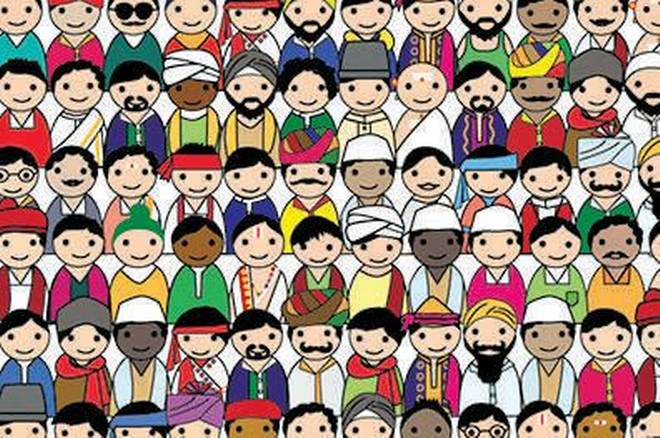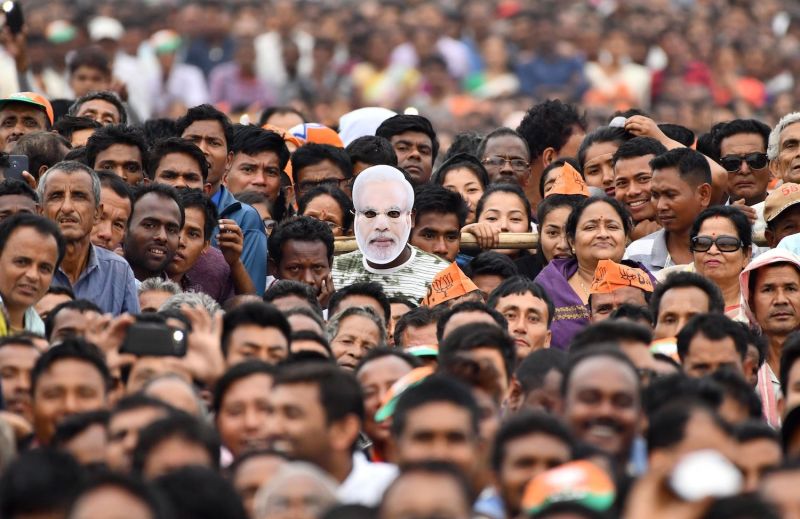
Indian nationalism has come of age. Much water has flown in the stream of Indian nationalism and it has, to a great extent, matured. Federal democracy and the sharing of powers between the states and the center have been reasonably achieved for now. The creation of ‘state’, ‘central’ and ‘concurrent’ lists stand testimony to this fact.
The Goods and Services Tax (GST) which is shared between the states and the center is yet another example.
Nationalistic tendencies at the time of independence primarily focused on how to build a strong ‘Indian Nation’ from the perspective of national integration. Over the decades it has moved down to shaping sub- nationalism within Indian nationalism. It could be understood as the devolution of power or the spread of federalism.
Separation demands from Dravidian parties in Tamil Nadu during the time of independence (between 1940 to 1955) and many other groups in north eastern India too have matured and were able to come to terms with Indian nationalism for they were able to realize the space and scope for a kind of sub nationalism which originates from ethnic or linguistic ideologies. It has led to disputes and conflicts between neighboring ‘sub-nationalities’ which the groups who were involved in have been able to overcome, though not completely. The reasons for the emergence of sub-nationalism, real or imagined ones, formation of regional political parties based on regional, ethnic, or linguistic lines and their desire to assume power reveal how ‘sub-nationalism’ within the larger frame of Indian nationalism works.
Tamil Nadu should have been the first state in this line when the Dravida Munnetra Kazhaham (DMK) captured power in the year 1967 from the Congress party. It started creating a linguistic identity and the state showed its progress as poverty began being alleviated and the GDP improved. The Akali Dal in Punjab and many more states followed it. Parties like Telugu Desam and many more such parties in north east have shown the way. This has met the much desired regional aspirations and also helped in meeting the regional needs of states where such tendencies did not emerge rigorously as they have always been ruled by the national parties like the states of Kerala, Karnataka and Maharashtra. The sub-national ideologies further surge ahead in the name of owning the state language as the sole language of the state. This trend is reflected in the language and in the education policies of some of the states in the new millennium. Many states aim to promote the state language as the compulsory language for all children studying in school. This will have severe implications from the angle of human rights, linguistic rights and also from the perspective of the right to schooling in one’s mother tongue, at least during the primary years.

Though Indian states were formed based on linguistic lines during the state reformulation times of 1950s and 1960s, every state had and continues to have people speaking other languages as mother tongues, not only at the borders, but also in every part of the state. This is in addition to tribal and minor languages. The kind of sub-nationalism, linguistic nationalism gets concretized through various means and processes would lead to be an assault on the rights of children. One of them is the language, the majority language of the states assumed to be the identity marker for asserting the linguistic (sub) nationalism. So the states attempt to make the majority language of the state as compulsory language in school education. Official language policy of India has made Hindi as the official language of the Indian Union and English as the associate official language while the states have their languages as official language of the state.
Three language formula which emerged as political consensus in the 1950s became part of the National Education Policy (NEP) 1968 and 1986. As the national language-in-education policy or strategy, the three language formula is being implemented in all the states except the state of Tamil Nadu which opposed it since the beginning to resist the imposition of Hindi. Post 2000 developments show something worrying for the linguistic harmony within states. The state of Kerala has moved a bill to make compulsory study of Malayalam up to class X for all children studying in the state. Many more states like Telagana, Karnataka are calling the shot next. This is not in consonance with the national language-in-education strategy, the three language formula or from the Constitutional rights angle. This is linguicism, linguistic majoritarianism, not to say linguistic imperialism. The states do not make it correct to impose its own language on those who live at the border where the language is different from the state language. For example the state of Kerala shares its border with Tamil Nadu and Karnataka. People at the border have Tamil and Kannada as their mother tongue.
Three language formula advocates mother tongue based multilingualism. Every child begins his / her schooling in the mother tongue and moves on to add at least two more languages by the time they complete their high school. The three language formula as recommended by the National Commission on Education 1964-66 states,
- The first language to be studied must be the mother tongue or the regional language
- The Second Language
- In Hindi speaking states, the second language will be some other modern Indian language or English, and
- In non-Hindi speaking states, the second language will be Hindi or English.
- The Third language
– In Hindi speaking states, the third language will be English or a modern Indian language not studied as the second language, and
– In non-Hindi speaking states, the third language will be English or a modern Indian language not studied as the second language. (GOI, 1966)
The states attempt to make it convenient to ‘impose’ the study of one language compulsory on all children by citing the first statement in the above recommendation. The ‘or’ i.e. the first language should be either mother tongue or the regional language gives scope for this kind of compulsion. Over the last three decades English has become a ‘common’ second language across the country. Three language formula comes into effect from class VI. Children study two languages up to class V. English has been accepted as a second language while majority state language has to be the first language with new laws being brought out by some states as mentioned above. This will lead to conflicts within the state for children belonging to other languages, say minority in the state but a majority language in another state. (Say Tamil or Kannada in Kerala or Malayalam in Tamil Nadu.) These children have to forget their language and study only the state majority language. Making any language compulsory violates the fundamental educational and constitutional tenet. Indian Constitution ensures the right of every citizen to have his / her education in their languages. Article 45 A of the Constitution gives the provision for children belonging to minority communities to study in their mother tongue and the district collector should ensure the provision.
States in their effort to promote their language should not snatch away the human right of children in school. The state language may be promoted as an additional language for those whose mother tongue is not the state language. In that case a provision for the study of more than two languages has to be ensured at the primary level. For example in the state of Kerala in addition to the mother tongue of non-Malayalam speaking children, English and Malayalam could be studied. This will lead to the learning of four languages by the time children reach class VI and where the three language formula is introduced, making the number of languages four. If such an arrangement could be introduced, this will bring in tribal and minor languages to school for most of the tribal languages are not taught in school.
The state majority language and English are the languages in most states, some states have made attempts to teach tribal languages, but as an additional language in addition to the two languages. Most North Eastern states have tribal languages as first language for they are the state languages. States need to introspect while making the state majority language as compulsory first language which makes it equivalent to mother tongue. Demarcation of our states is not like the demarcation in Australia where the province lines are straight and neat (because when Australia was colonized there was no concern for the natives, their lives, leave alone their languages. We all know the Australian story, how the natives were dealt with and how 100s of native Australian languages perished). The way our state borders are demarcated, it shows how linguistic identities were allowed to become the basis for their formation.
Any Indian village will have more than two languages since English has become a language ‘known’ to everyone. Making state language compulsory for all is an impossible effort and this would not be instrumental in the promotion of the language. What the state language promoters need to be worried about is the spread of English as a medium of instruction in school education. States like Tamil Nadu, Kerala, Karnataka, as also in Uttar Pradesh government school are being converted into English medium and number of private English medium schools are on the rise. This will in due course of time endanger all the other languages in the state. Sound and harmonious language learning and cognitive development can take place when children learn in their mother tongue at least during the formative years of schooling. Let’s not harm that by imposing another language even before the grasp over one’s own language is fully developed.
Dr. Ramanujam Meganathan is an Associate Professor, NCERT, New Delhi.










